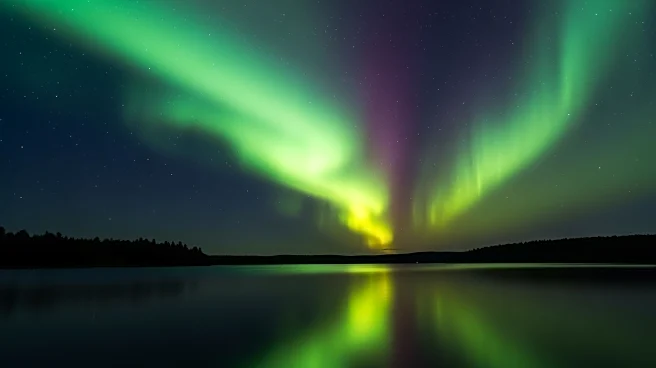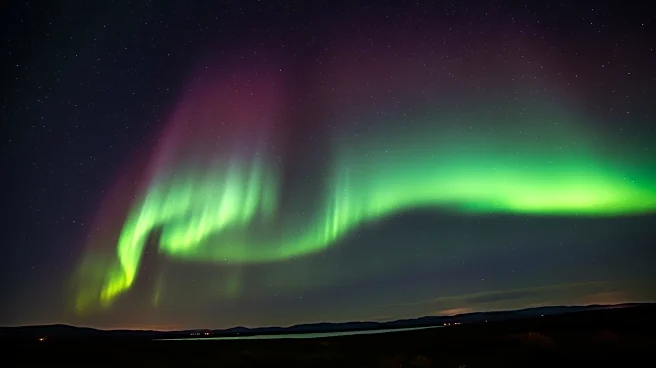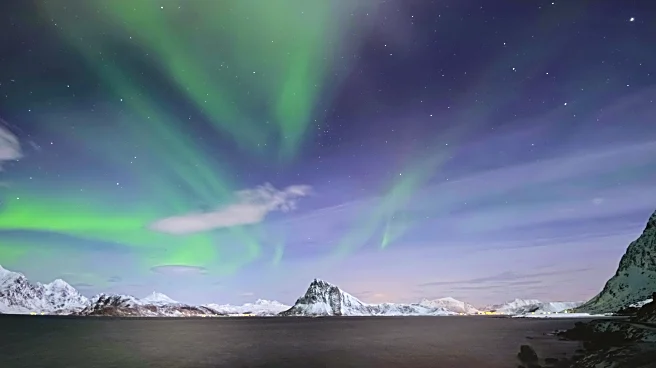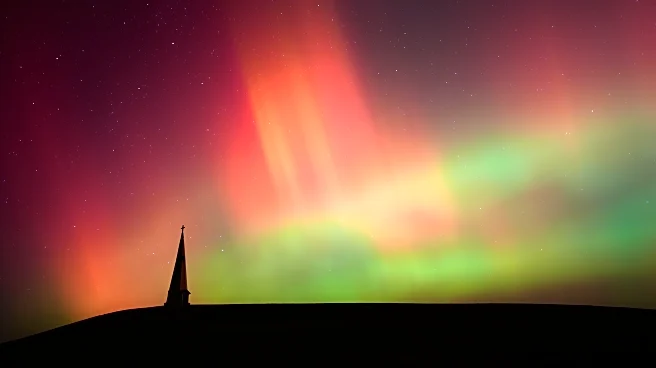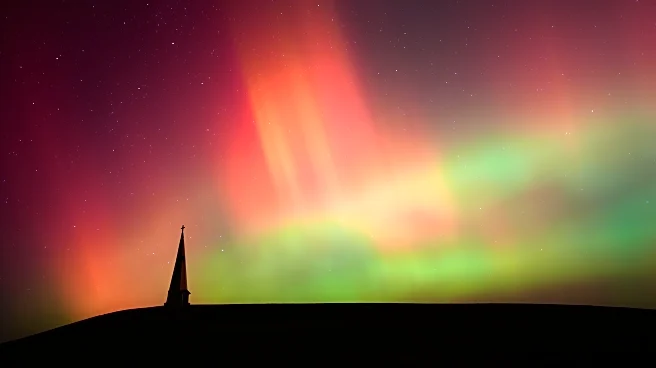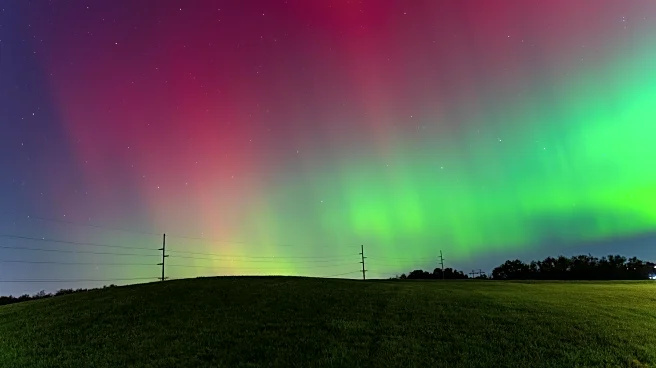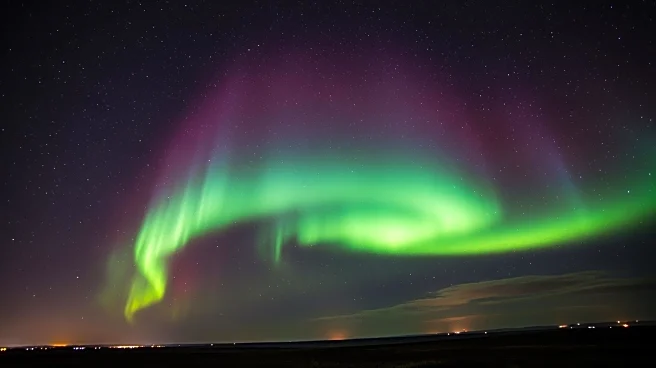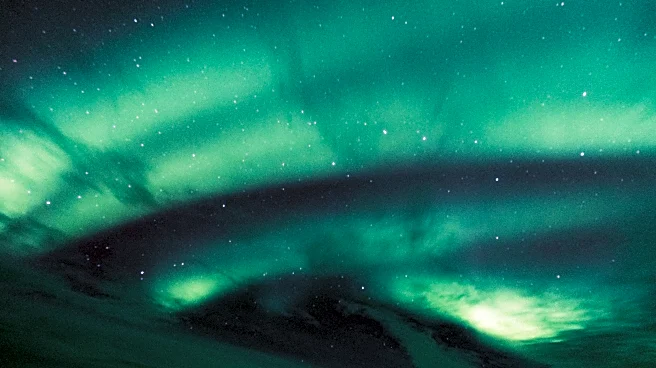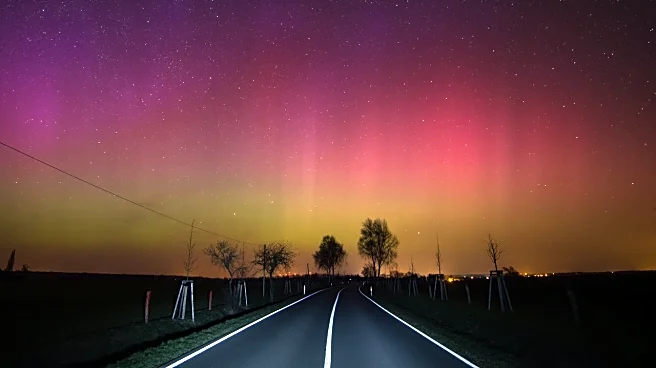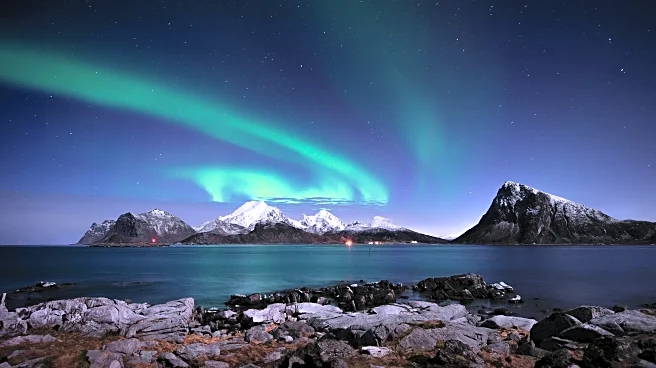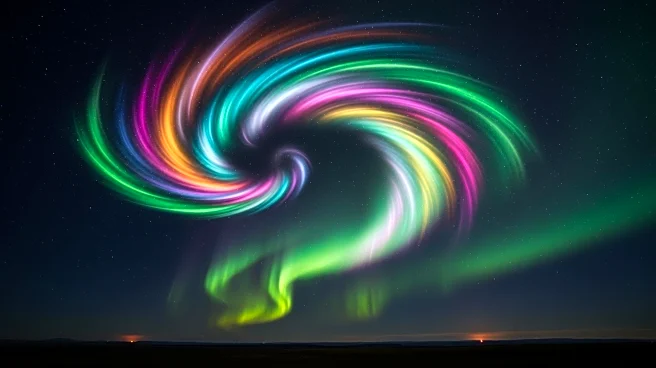What's Happening?
The National Oceanic and Atmospheric Administration (NOAA) has reported that a severe geomagnetic storm could make the northern lights visible over parts of Massachusetts again on Wednesday night. This follows a significant display on Tuesday night, which
was the largest since October 2024. The storm reached G4 levels due to recent coronal mass ejections from the sun, with G5 being the highest level. The geomagnetic storms can disrupt communication infrastructure, causing voltage control issues and satellite anomalies. Despite light pollution, the northern lights were visible in Boston, and there is a moderate chance of seeing them again, particularly in central and northern New England.
Why It's Important?
The visibility of the northern lights in areas as far south as Massachusetts highlights the intensity of the current geomagnetic storm. Such storms can have significant impacts on technology, including potential disruptions to power grids and satellite operations. This event underscores the importance of monitoring space weather, as it can affect various sectors, including telecommunications and energy. The increased activity is linked to the sun's solar maximum period, which could continue to influence aurora visibility into 2026, affecting both scientific research and public interest in space phenomena.
What's Next?
The Space Weather Prediction Center forecasts that the ramped-up auroras could persist into 2026, suggesting ongoing opportunities for viewing the northern lights in unusual locations. Stakeholders in telecommunications and energy sectors may need to prepare for potential disruptions caused by future geomagnetic storms. Additionally, public interest in space weather phenomena may increase, leading to more educational and observational activities related to auroras.
Beyond the Headlines
The occurrence of the northern lights in regions not typically known for such displays may lead to increased public awareness and interest in space weather. This could drive educational initiatives and community events focused on astronomy and atmospheric sciences. Furthermore, the potential disruptions to technology highlight the need for robust infrastructure capable of withstanding space weather impacts.
